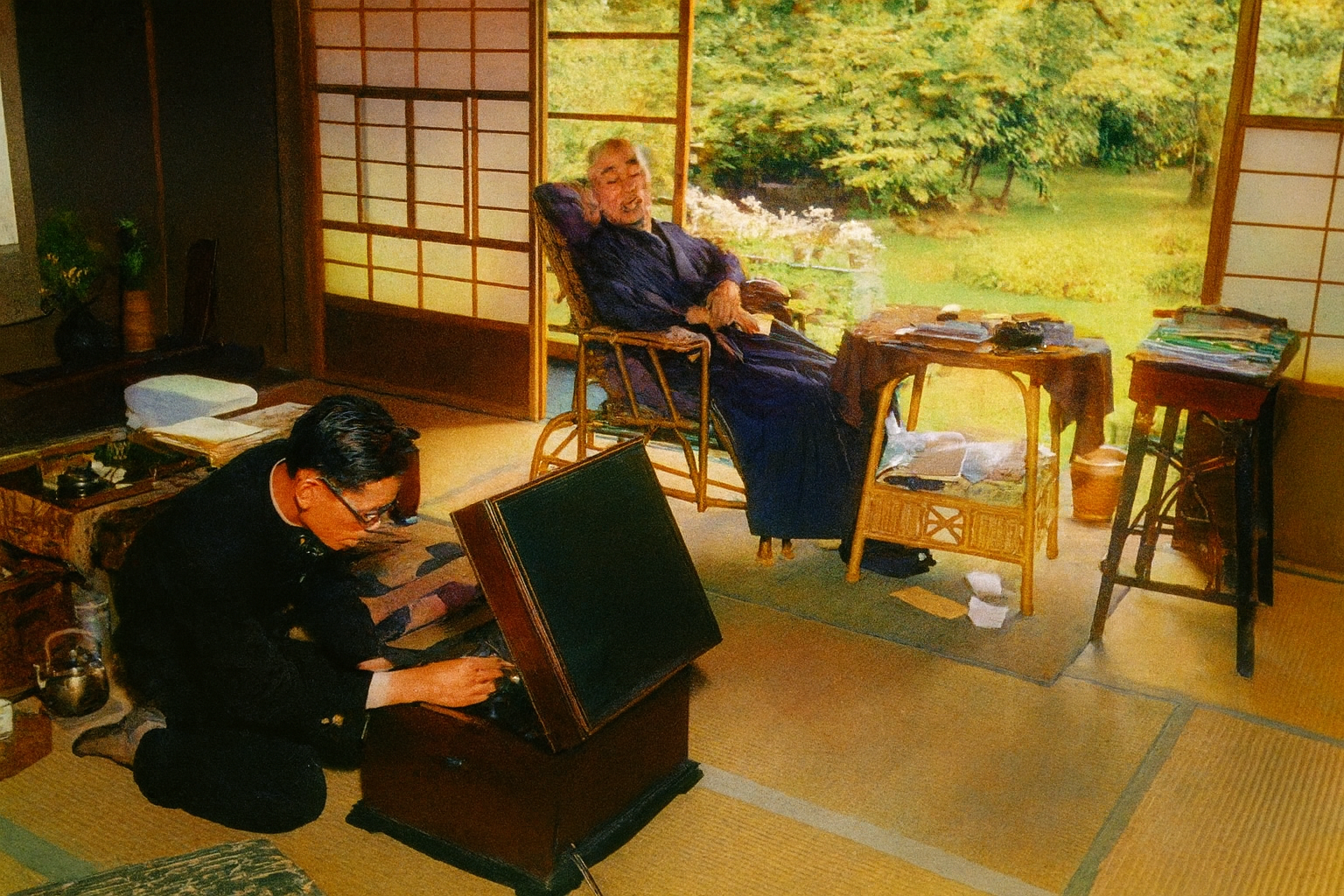Tradition, Rice Fields, and the Conformity of Pre-War Japan
When Americans opened the August 30, 1937 issue of Life Magazine, they encountered one of the most striking cultural essays of the decade. Titled “The Japanese: The World’s Most Conventional People,” it was more than a profile of farmers, fishermen, and families. It was a window into a nation at the height of its traditions and on the edge of modern war.
The article’s photographs carried Americans far from their own lives and into rice paddies, bathhouses, Shinto festivals, and tatami-mat homes. These images captured not only how the Japanese worked and lived, but also how they thought about duty, decorum, and the collective spirit. In the late summer of 1937, just weeks after Japanese forces had pushed into China, Life presented a portrait that was both intimate and unsettling.
By mid-1937, Japan was already fighting in China. The Marco Polo Bridge Incident in July had erupted into a full-scale war — a conflict that would claim millions of lives and merge into World War II. Americans reading Life would have been aware of the headlines: Japanese armies advancing on Shanghai, international protests, and speculation about how far Tokyo’s ambitions would stretch.
Yet the Life photo essay turned the lens away from soldiers and diplomats to focus on daily life. Here were farmers bending under the summer sun, women bathing children in stove-heated tubs, and villagers celebrating Shinto rituals. Captions emphasized Japan’s deep traditions of loyalty, modesty, and collective effort — values that, Life suggested, bound Japanese society into a “most conventional” whole.
The timing was significant. Just as Americans debated neutrality and isolationism, they were shown images of the very people whose government was waging war abroad. For many, this issue was their first extended look into Japanese life beyond political cartoons or newspaper dispatches.
What distinguished Life was its belief that photographs could tell history better than words alone. In the Japanese essay, that conviction came alive:
Images showed farmers in grass hats and cotton shirts working flooded paddies in June, a scene as timeless as it was backbreaking. Stark photos revealed families bathing in crude tubs set over stoves, with captions remarking on the harshness and intimacy of rural life. Contrasted with the peasant scenes, Life also depicted bustling bathhouses, where dozens shared mineral waters. A haunting note explained that at thirteen, a farmer’s daughter might be sold to a factory or brothel, underscoring gender inequality. Festivals, store floats, and temple tablets revealed the mix of faiths and traditions sustaining village life. And from men squatting on curbsides to families gathered in tatami rooms, the photographs balanced hardship with glimpses of ordinary joys.
For readers, these images were immersive. They offered the texture of daily life — not just events, but atmosphere. No other American publication could show rice terraces, fishermen, pilgrims, and schoolgirls in such unfiltered sequence.
The August 30 issue’s cover featured a frog hunt in California, yet its heart was the Japanese feature. That editorial choice reflected Life’s rhythm: balancing Americana with international urgency.
Inside, the Japan essay exemplified why Life mattered. Photographs were not decoration — they were the story. Each spread combined strong images with concise captions that explained not only what was happening but why it mattered. The contrast between modern headlines of Japanese troops in China and Life’s intimate photos of everyday citizens left readers both fascinated and uneasy.
This was Life’s signature: an ability to merge journalism with visual anthropology, presenting distant cultures in a way that felt both immediate and documentary.
-
The Rice Economy — Japan’s farmers fed over 70 million people on limited arable land, a feat of endurance and ingenuity.
-
The Role of Women — From daughters trained to labor in fields to mothers bathing children in rustic tubs, women’s lives were shown as both essential and restricted.
-
Fishermen and Sampans — With 1.5 million fishermen and 360,000 boats, the seas were vital to daily sustenance.
-
Bathing Culture — Images of communal baths shocked some Western readers but revealed a deep cultural rhythm of hygiene, leisure, and community.
-
Faith and Ritual — From Shinto fire rituals to Buddhist ancestor tablets, religion permeated every facet of life.
-
Conformity and Convention — The article stressed how Japanese values of loyalty and decorum shaped every relationship, from family to village to state.
-
Village Leisure — Farmers enjoyed weddings, funerals, pilgrimages, and cherry blossom viewings — ritual moments of beauty amid grueling labor.
-
The Farmer’s Daughter — A stark reminder of poverty and lack of rights for young women in rural Japan.
-
Modernity vs. Tradition — Radios, movies, and phonographs appeared beside tatami mats and wooden sandals.
-
The Shadow of War — Though not explicit, the essay’s timing underscored how these “conventional” people were also subjects of a rapidly militarizing nation.
Today, vintage Life magazines from the 1930s are prized collectibles, and this issue stands out for its cultural and historical resonance.
-
Historical Timing — Published just weeks after Japan’s invasion of China, it captures ordinary life at a moment when the nation was entering a new, violent phase.
-
Rare Cultural Photography — These images remain among the most detailed Western photo-essays on Japanese life before World War II.
-
Artifact of Perspective — It reveals not only Japan, but how Americans were taught to see Japan in 1937.
-
Collector Demand — Issues covering the buildup to World War II, particularly those on Japan, Germany, and Italy, are consistently sought after by collectors.
Owning this issue means holding a tangible artifact of a world on the brink. It is more than a magazine; it is a piece of global history.
In hindsight, the photos carry added weight. Within four years of publication, Japan attacked Pearl Harbor, plunging America into the Pacific War. The very farmers and fishermen shown in the 1937 essay became part of a nation mobilized for total war.
To revisit these pages is to glimpse a society both timeless and transitional, caught between rice paddies and industrial arsenals, between conformity and expansionism. That complexity is what makes this issue so compelling today.
If you’re interested in exploring this issue — or any of Life’s remarkable cultural and wartime coverage — thousands of original Life magazines are available to browse. Each is a time capsule, a record of how Americans first saw the world beyond their borders.
👉 Browse the full collection of original Life magazines here: Original Life Magazines Collection
From the 1930s through the 1970s, the magazine chronicled politics, culture, war, science, and art with a depth and immediacy unmatched by any other publication.
Conclusion
The August 30, 1937 issue of Life Magazine remains one of the most significant pre-war cultural documents available to collectors. Its essay on Japan presented Americans with unforgettable images of tradition, conformity, and resilience at a time when the world was rapidly changing.
For readers then, it was both an introduction and a warning. For collectors now, it is a powerful reminder of how history looked before it became history.
Owning this issue means holding a piece of 1937 in your hands — a year when rice farmers, fishermen, and village families carried on with their lives, even as their nation prepared to march into the storm of global war.

